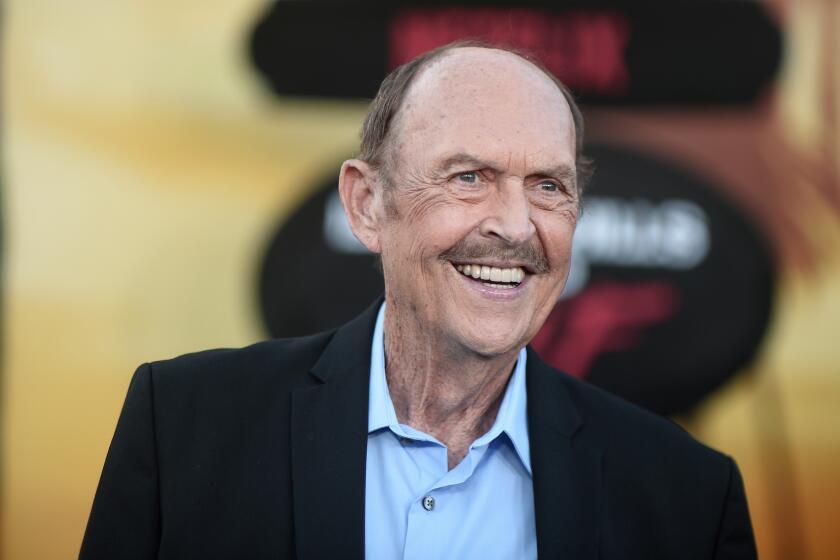Movie-Rating System Needs to Clean Up Its Act
An open letter to Jack Valenti, president of the Motion Picture Assn. of America.
Dear Mr. Valenti:
Your movie ratings system is on the loose. Please stop it before it kills again.
The latest victim, as you know, is Alan Parker’s “Angel Heart.” Your ratings panel, those six paid guardians of moviegoer morality, have given the movie an X--the equivalent of marking the spot on one’s skull where the lobotomy will commence--and another serious piece of art is in jeopardy of being compromised.
I am hoping that Tri-Star Pictures, which is not a member of the MPAA and therefore not bound to bear the dreaded X on its promotional material for “Angel Heart,” will release the movie unexpurgated. It’s a chore, since many exhibitors refuse to book films rated X and because many newspapers and television stations refuse advertising for them. But it has been done.
If you have seen “Angel Heart,” you must know that the offensive scene cannot be cut and still serve the plot. It is a tough scene, I grant, a repugnant blend of sex and violence with dark religious undertones. But it is intrinsic to the story and it has been edited in a way that prompts an intellectual revulsion, not a reflexive one.
When “Angel Heart,” scheduled for theatrical opening March 6, gets to videotape, we may be shocked by what we see when we freeze the key frames (and, of course, we will freeze them). But at 24 frames per second, your imagination sees more than your eyes do.
That is simply good film making.
The X rating is the most serious flaw in a system that--with both good and commercial intentions aside--amounts to institutionalized censorship. Sure, it is a lesser evil than having 50 different state boards, which you say is the alternative. But why accept a design flaw that punishes good film makers and one that could be remedied in a single stroke?
All that you would need to do to solve the “X problem” is to change the X to an A, “for adults only.” It would have the same effect, restricting audiences to people 17 and older. And it would relieve the exhibitors of their showy stand against pornography.
The argument that the porn film industry would simply adopt the A is absurd. There is no commercial advantage for porn films to be linked to legitimate films.
Besides, with the advent of VCRs and the cornucopula of X-rated titles at the local tape store, porn theaters are facing obsolescence.
You caved in like a wet sack when Steven Spielberg’s “Indiana Jones and the Temple of Doom” prompted an outcry for a PG-13 rating. It was a smart public relations move on your part, however grudging, but the PG-13 amounts to diddle in the context of serious film making.
The new PG-13 rating, initiated in response to violence, makes it a little easier for producers and studio marketing mavens to exploit sexual content (they have a better idea how much bad language and how many bare breasts it takes to get the most commercially desirable rating). However, by making it a parental advisory, rather than a restriction to be enforced at the box office, it is useful only to those few responsible parents willing to check out the content of movies before trying to prevent their kids from seeing them.
I know your argument about the ratings system being designed solely as a service for parents, that the board members rate films based on how they feel a majority of parents across the country would want those films rated. But you wouldn’t buy an acne ointment on that testimony, and in cases where your people mark films with an X (why not a skull and crossbones?), it usurps a fundamental parental right.
As long as the current system is intact, your board has the power to either legislate a blackout of a movie (the X means no one under 17 is admitted, under any circumstances) or to force film makers back into the editing room with vague instructions to clean up their acts.
It is an astonishing anachronism in 1987 that six anonymous people sitting in the dark (and in the Dark Ages?) can tell a first-rate director like Alan Parker (“Midnight Express,” “Birdy”) to rethink his work on their majority hunch that most parents in America welcome them as surrogates in their child rearing.
Thank you very much, but I would like to decide what is OK for my children to see. If you could enforce your R rating (children under 17 must be accompanied by an adult), you wouldn’t need a stronger one. But in an industry where principles always follow dollars, the R restriction will remain an ideal . . . and a joke.
Next year will mark the 20th anniversary of the Jack Valenti-fathered motion picture ratings system. Overall, it has been a success--helpful to some parents, harmless to most film makers.
I don’t condone any form of censorship, and I’m embarrassed by those media who refuse to accept advertising for mainstream movies rated X by the MPAA. (It is the media’s freedom of speech/censorship paradox that undoubtedly will force Tri-Star to acquiesce on “Angel Heart.” You can’t sell a movie if you can’t advertise it.) But given the likelihood of local yahoos setting up their own film-burning boards across the country, yours probably is the least objectionable system.
But it is objectionable. And where the X is concerned, it is--or should be--intolerable.
The ratings system is your child, Jack, and it deserves its own X rating. So, why don’t you take it back to the editing room and see if you can’t clean up your act.
Yours, with an H, for hopeful.
More to Read
Only good movies
Get the Indie Focus newsletter, Mark Olsen's weekly guide to the world of cinema.
You may occasionally receive promotional content from the Los Angeles Times.










